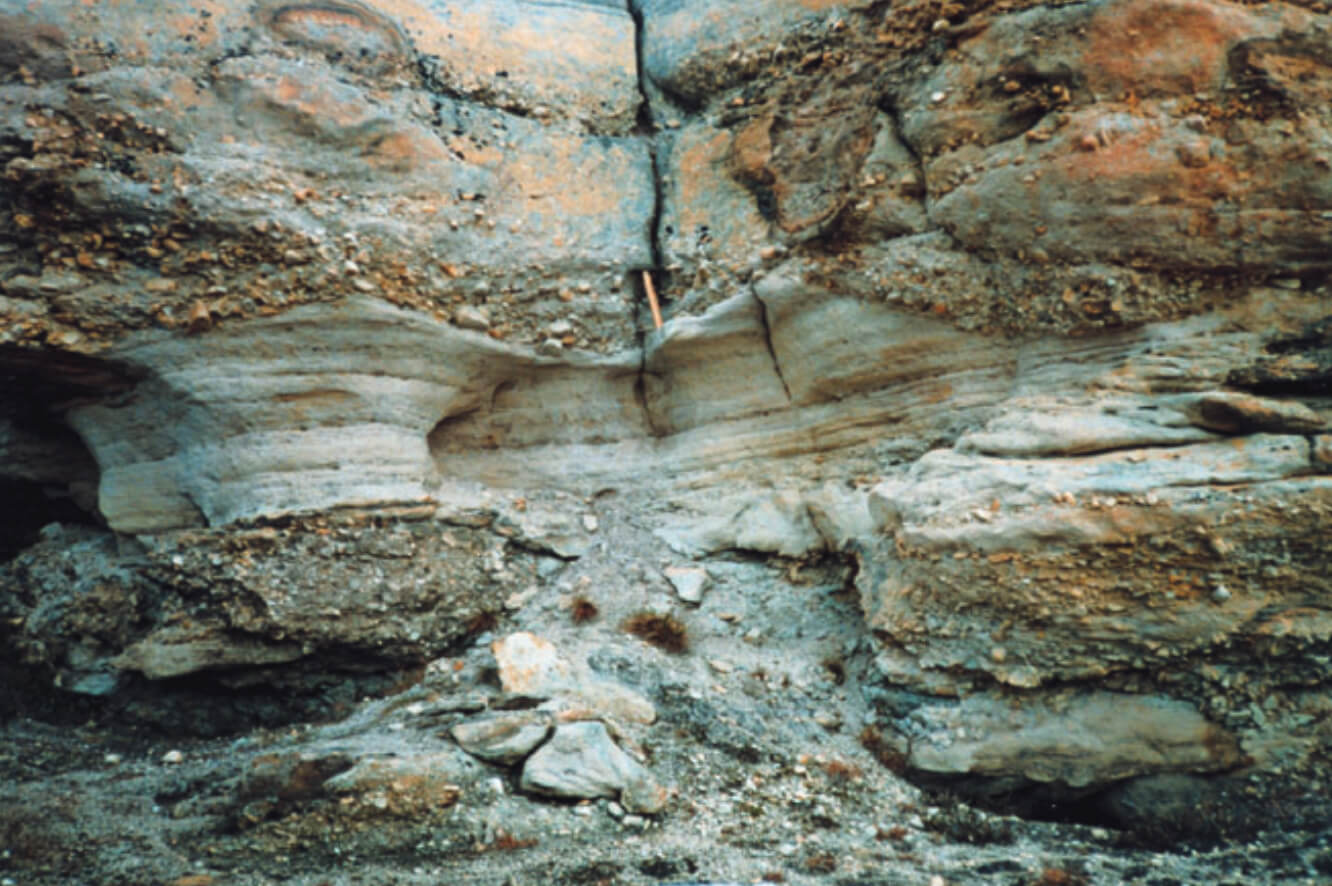
How to Cite
Share
Abstract
The Middle–Upper Jurassic succession of Kuhn Ø, North-East Greenland accumulated in a major half-graben and is an excellent analogue for the subsurface of the mid-Norwegian shelf. On Kuhn Ø, peneplaned crystalline basement was incised by a drainage system during a major base-level lowstand, probably in late Early or early Middle Jurassic times. It was filled with fluvial conglomerates of the newly defined Middle Jurassic Bastians Dal Formation during subsequent base-level rise. As sea level continued to rise, precursor-peat of the coals of the Muslingebjerg Formation formed in swamps which covered the conglomerates and filled the remaining space of the incised valley system. The valley and interfluve areas were flooded in Late Bathonian – Callovian times and tidally-dominated, shallow marine sandstones of the Pelion Formation were deposited on top of the valley fill and over the adjacent basement peneplain. These sandstones are overlain by the newly defined shallow marine Oxfordian Payer Dal Formation which is subdivided into a lower unit and an upper unit, separated by a major drowning surface. The Payer Dal Formation sands were flooded in the Late Jurassic and organic-rich, offshore mudstones of the Bernbjerg Formation were deposited. The Jurassic succession of Kuhn Ø can thus be subdivided into large-scale sedimentary units separated by major drowning surfaces. They are of regional extent, and in combination with biostratigraphic and 87Sr/86Sr isotope data they allow the correlation of the sedimentary units on Kuhn Ø with more offshore deposits to the south in Wollaston Forland and more landwards successions to the north in Hochstetter Forland. Petrographically, the trough cross-bedded sandstones of the Pelion Formation and the lower unit of the Payer Dal Formation include both calcite-cemented and poorly cemented quartz sandstones. The calcite cement was derived from dissolution of abundant calcareous fossils and forms concretionary horizons. The upper unit of the Payer Dal Formation mainly consists of weaklycemented quartz sandstones with porosities around 30%. The sandstones of the Pelion and Payer Dal Formations on Kuhn Ø are petrographically very similar to Jurassic sandstones from the mid- Norwegian shelf and the Barents Sea with regard to original mineralogical composition, sorting and grain size. The Bernbjerg Formation mudstones are comparable to the Upper Jurassic source rock of the mid-Norwegian shelf and the Barents Sea, but have lower hydrogen index (HI) values due to terrigenous input in a relatively proximal setting. Coals of the Muslingebjerg Formation have significant source rock potential with measured HI values up to 700, kerogen types II–III and total organic carbon (TOC) values above 50%.
How to Cite
Share
Downloads
Editors: Jon R. Ineson and Finn Surlyk
The Jurassic rocks of Denmark and East Greenland record the evolution of two discrete portions of the Mesozoic rift complex, now separated by the North Atlantic Ocean. The Jurassic of Denmark and adjacent areas occurs mostly in the subsurface and research has thus focussed [...]










